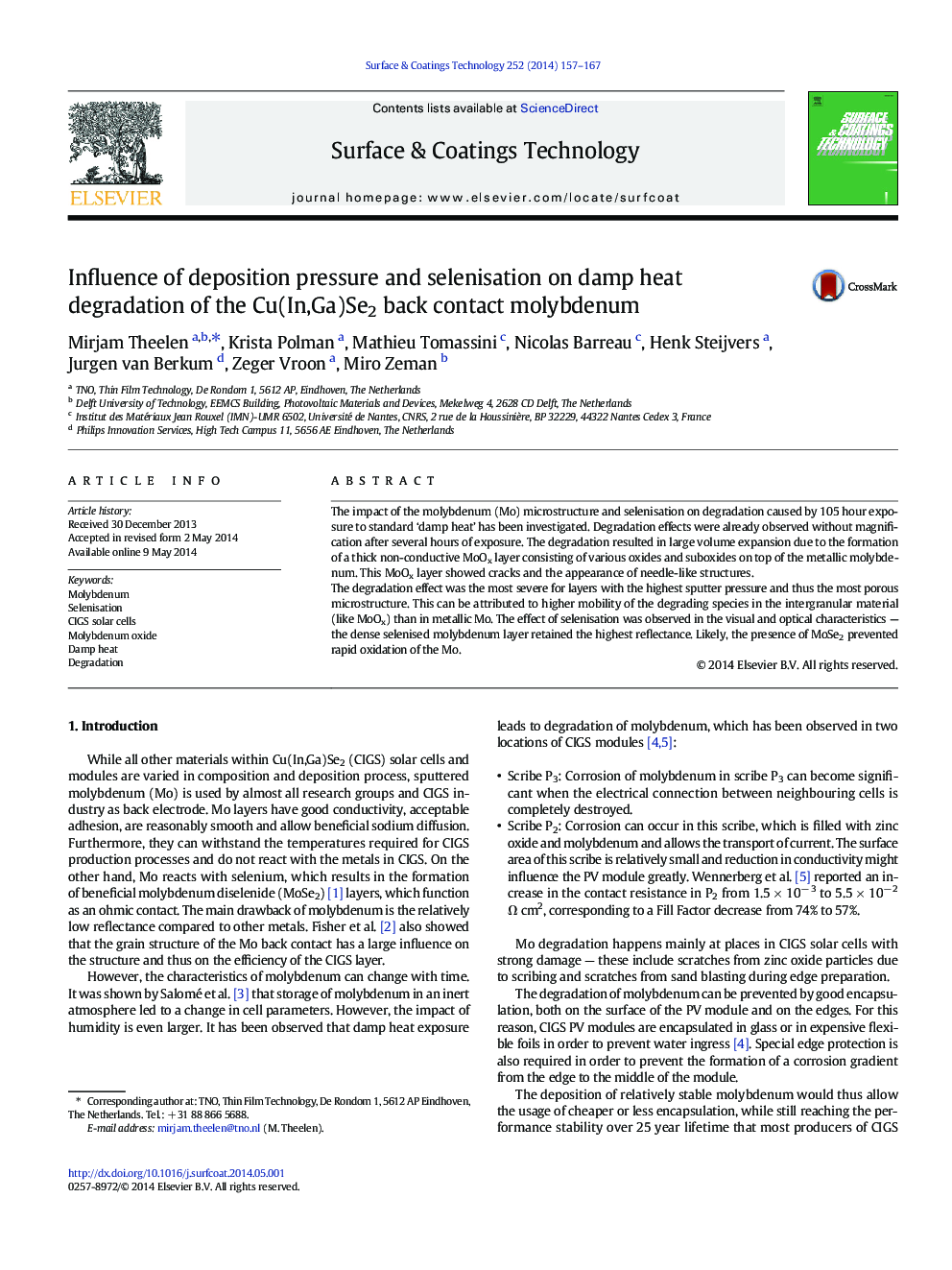| Article ID | Journal | Published Year | Pages | File Type |
|---|---|---|---|---|
| 1657491 | Surface and Coatings Technology | 2014 | 11 Pages |
•Damp heat treatment of molybdenum leads to a MoOx/Mo multilayer structure.•The formed molybdenum oxide is a mixture of MoO2, MoO3 and various suboxides.•Molybdenum oxide forms within hours, is non-conductive and can crack.•Sputter pressure and selenisation influence the degradation behaviour of molybdenum.•Dense selenised molybdenum retains the best reflectivity and conductivity.
The impact of the molybdenum (Mo) microstructure and selenisation on degradation caused by 105 hour exposure to standard ‘damp heat’ has been investigated. Degradation effects were already observed without magnification after several hours of exposure. The degradation resulted in large volume expansion due to the formation of a thick non-conductive MoOx layer consisting of various oxides and suboxides on top of the metallic molybdenum. This MoOx layer showed cracks and the appearance of needle-like structures.The degradation effect was the most severe for layers with the highest sputter pressure and thus the most porous microstructure. This can be attributed to higher mobility of the degrading species in the intergranular material (like MoOx) than in metallic Mo. The effect of selenisation was observed in the visual and optical characteristics — the dense selenised molybdenum layer retained the highest reflectance. Likely, the presence of MoSe2 prevented rapid oxidation of the Mo.
